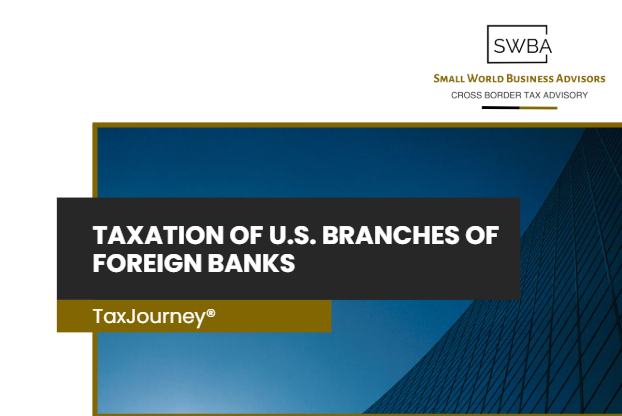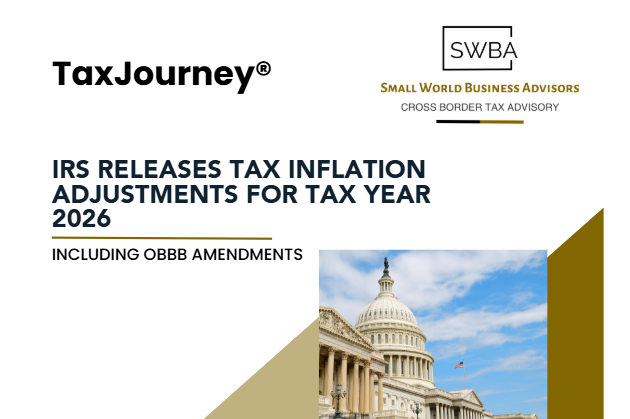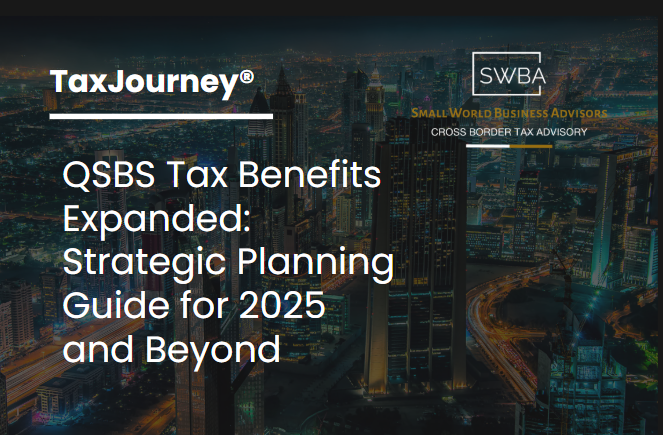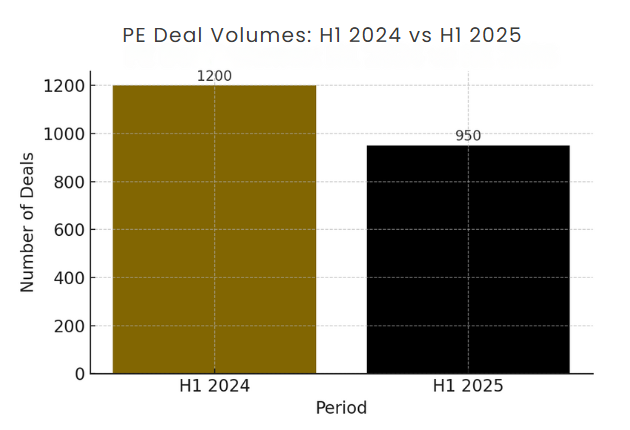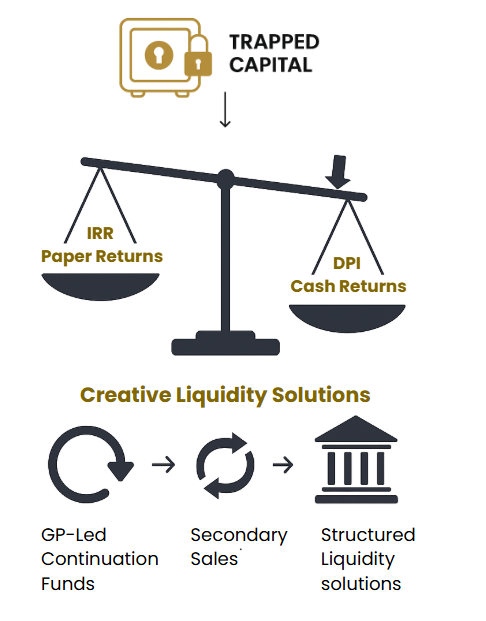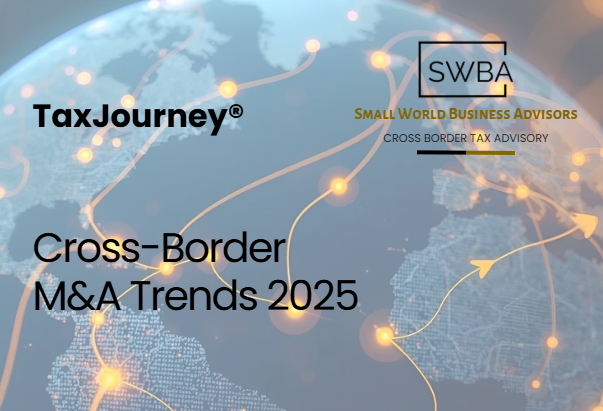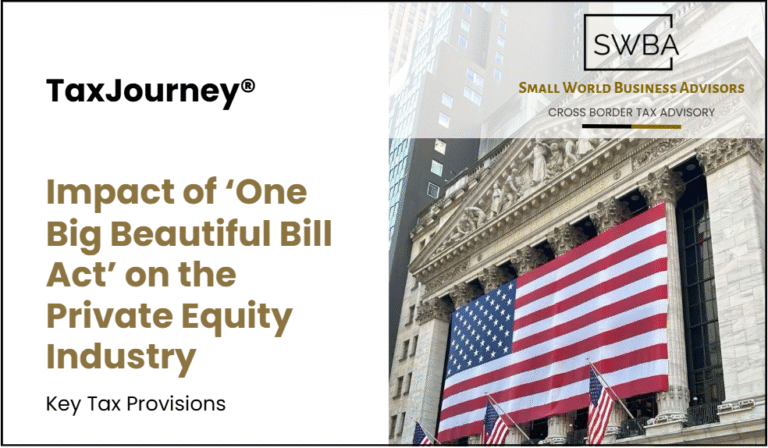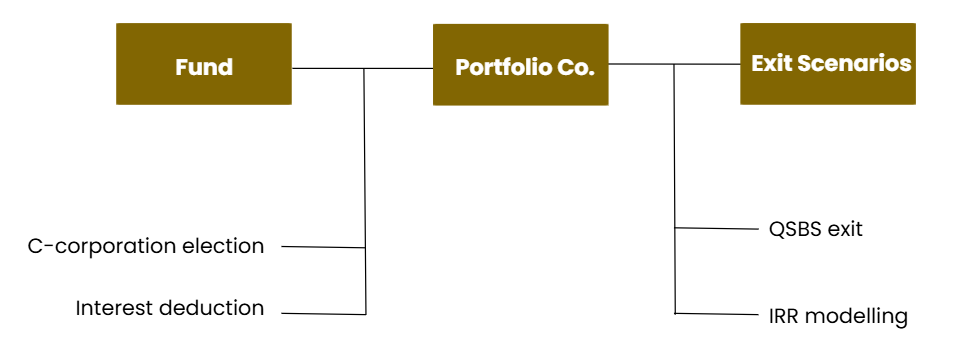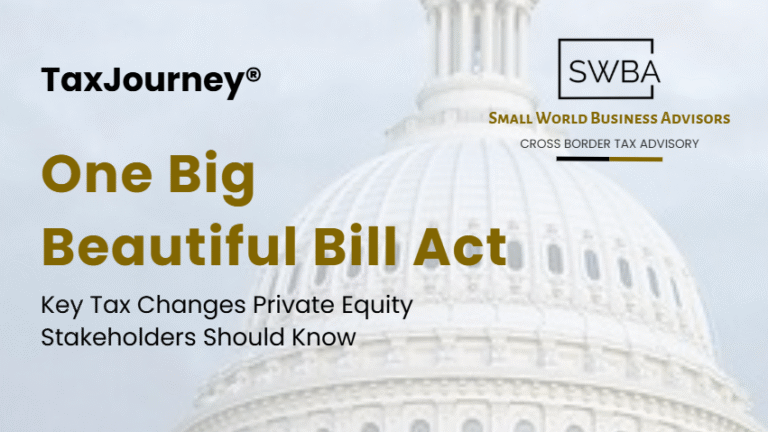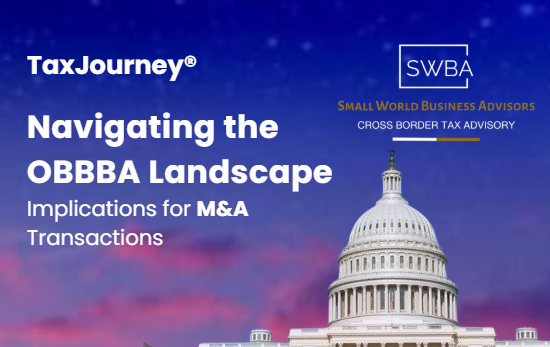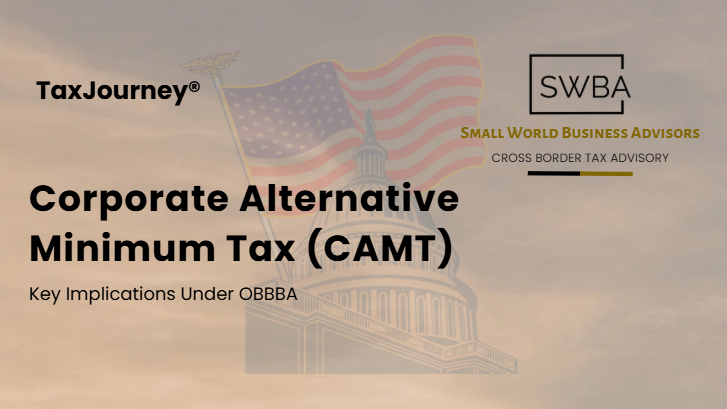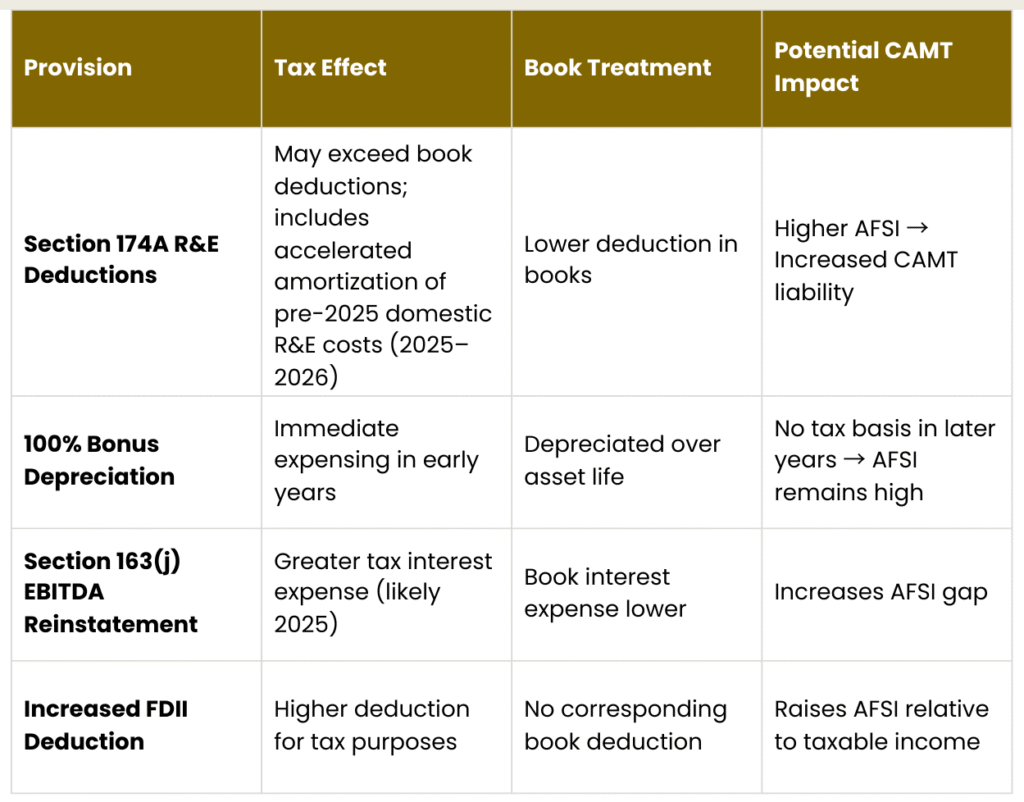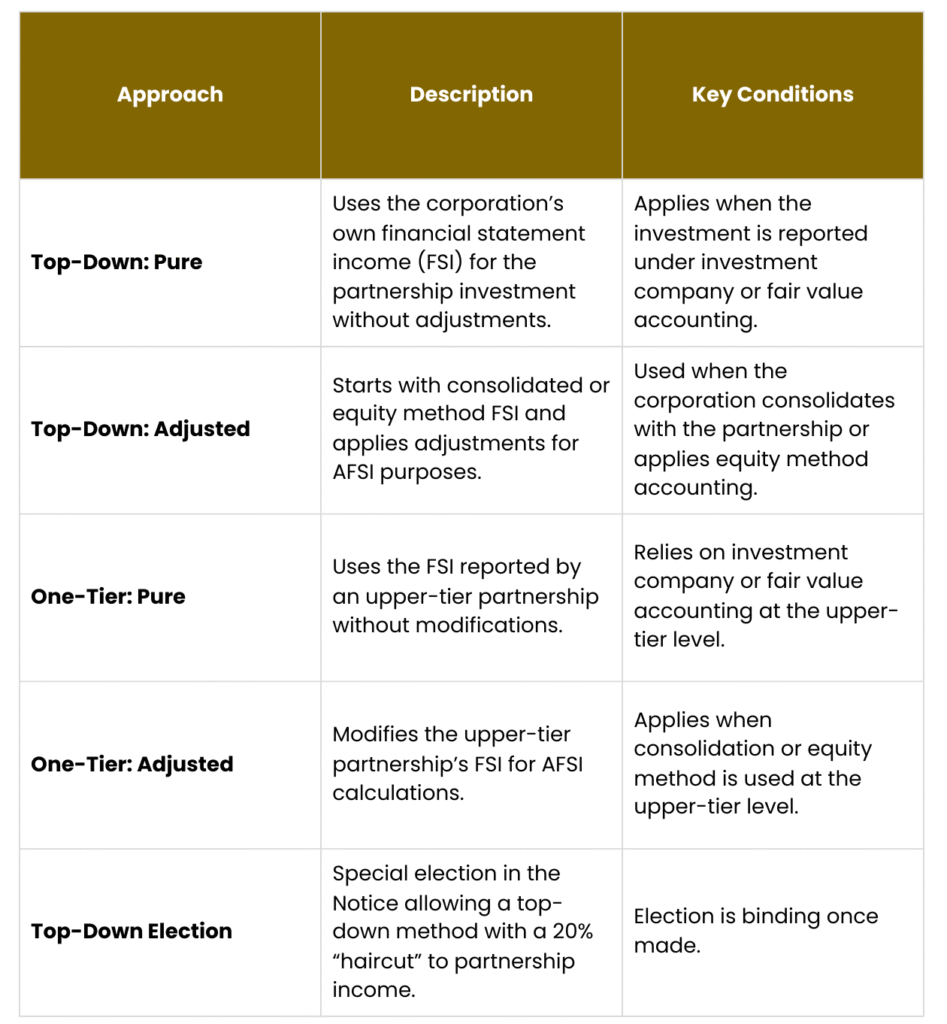The United States tax system does not treat U.S. branches of foreign banks as separate legal entities for tax purposes. Instead, the foreign bank itself is considered the taxpayer.
Foreign banks engaged in a trade or business in the U.S. are taxed on taxable income that is effectively connected income (“ECI”) with the conduct of that U.S. trade or business. Further, while the foreign corporation remains the taxpayer, certain provisions of the Internal Revenue Code (“IRC”) and Treasury Regulations treat U.S. branches as if they were separate entities for specific purposes.
- Reg. § 1.882-5 provides rules for determining deductible interest expense of a foreign bank by treating interest as attributable to the U.S. trade or business.
- The Branch Profits Tax (“BPT”) and Branch-Level Interest Tax (“BLIT”) impose additional taxes at the branch level.
- Most income tax treaties rely on the permanent establishment principle, allocating to the U.S. branch the profits the branch would have earned if it were an independent and separate enterprise.
This article will concentrate on selective, but central topics, such as:
- The notion/definition of ECI as it applies to foreign banks.
- The provisions of Reg. § 1.882-5 for the deduction of a foreign bank’s interest expense.
- The relationship between interest allocation under § 1.882-5, the BPT, and the BLIT.
- More general implications of such rules and provisions given the increasing complexity of cross-border banking.
Effectively Connected Income (ECI)
Effectively Connected Income – The Basics
A foreign corporation with a branch located in the United States is almost always classified as being engaged in a trade or business in the United States; therefore, such a corporation is subject to U.S. federal income tax on taxable income that is considered to be “effectively connected” with the conduct of that United States trade or business.
If the foreign corporation is eligible for treaty benefits, it is subject to U.S. taxation only to the extent that the U.S. income is “attributable” to a permanent establishment in the United States. Although “effectively connected” and “attributable” do not mean the same thing, in practice they are sufficiently similar to produce the same results, with specific exceptions noted in the review (e.g., differences with respect to the “residual force of attraction” rule in IRC § 864(c)(3)).
Foreign bank’s ECI is taxed in much the same way as income for a domestic bank. Such income is subject to the corporate tax rate (21% federal as of November, 2025) in accordance with IRC §11 and 882(a).
The “All-Or-Nothing” Rule
A key aspect of the ECI regime is the “all-or-nothing” treatment of a specific income item: the item is either completely treated as ECI or completely excluded from ECI. No pro-rata allocation is allowed between different bank branches regardless of the fact that different bank locations contributed economically to the transaction. This would mean U.S. tax could be assessed on more (or sometimes less) than the branch’s actual economic share of the income.
Interbranch Transactions Disregarded
Another basic principle is that interbranch transactions are not respected under U.S. tax law. Because a branch is part of the same legal entity, a loan or swap with a U.S. branch and its foreign home office (or another branch) is simply ignored for U.S. tax purposes. Interbranch transactions may matter for regulatory purposes or for financial reporting, or for tax purposes in some foreign jurisdictions but not for U.S. federal tax purposes.
These features create a risk of double taxation. The U.S. may tax ECI using broad, all-or-nothing attribution rules. A foreign jurisdiction may tax the same income at the same time especially if it respects interbranch dealings that the U.S. disregards.
Therefore, foreign banks must plan accordingly while also relying on treaties for cross-border transactions with U.S. counterparts.
Specific Categories of Income
1. Interest Income & Gains on Debt Securities
- Banks are governed by a special ECI rule in Reg. § 1.864-4(c)(5). This rule is available to banks if they are regulated by the U.S. and deal with determining whether or not the interest or gain on debt securities is effectively connected income.
- The core test for this purpose is as follows: A debt security is attributable to a U.S. branch if that branch actively and materially participates in the solicitation, negotiation or performance of activities necessary to acquire the security.
- Participating in loan negotiations, credit analysis, collateral assessment or approval of terms would fall within this category.
- A bank would not meet this participation standard through merely passive activities such as recordkeeping, clerical processing or mere signatory approvals.
- In terms of the attribution principle, once a security has been attributed to a U.S. branch at acquisition, it remains attributable to the branch during the holding period. This is referred to as the “once attributed, always attributed” rule.
Special cases:
- Typically, securities bought by the home office and later recorded in the U.S. branch are not ECI because the branch did not participate in the acquisition.
- Revenue Ruling 86-154, Situation 3, confirmed that even though the home office negotiated a global credit line, it still held that a U.S. branch loan could be appropriately attributable to such branch as long as the branch did the following:
- Negotiated collateral;
- Performed an independent credit analysis;
- Funded the loan; and
- Recorded it on the books of the branch.
This ruling confirmed that the home office, and the U.S. branch, could each participate actively and materially in the loan acquisition, making the portion attributable to the U.S. branch as ECI.
2. Dividends and Gains on Stock
- The exception to ECI rules for banks applies to certain stock, but only in certain circumstances. Stock is considered attributable to a branch (and thus generates ECI) only when:
- It is received as additional consideration for making a loan.
- It is pledged as collateral and later acquired through foreclosure.
- It is acquired in the process of distributing securities to the public.
- In practice, stock holdings are rarely considered attributable to the U.S. branch unless closely associated with some loan or distribution.
- Moreover, stocks of a banking subsidiary cannot be considered attributable to the branch, and stocks of banking subsidiaries almost never generate ECI.
3. Fee Income
- Bank fee income arises in conjunction with lending franchise and advisory activities. Common examples of fee income include loan commitment fees, origination fees, servicing fees, placement fees, and financial advisory fees.
- Source rule: These fees are U.S.-source income if the services are performed in the United States.
- Treatment: Generally fees are treated as compensation for services and not interest.
- Exception: Fees can be recharacterized as interest or original issue discount if fees are unreasonable or not contingent on actual services rendered.
4. Letters of Credit and Guaranty Fees
- Commissions received on letters of credit, confirmations, acceptances, or other credit guarantees are not treated as interest but the IRS often analogizes them to interest for sourcing purposes.
- If the person whose credit is guaranteed is a U.S. person, the commission is U.S. source and ECI if the U.S. branch participated materially in issuing the guarantee.
- If the credit guarantee relates to a foreign person, the income is foreign-source and not ECI, even if the U.S. branch issued or processed the guarantee.
- Without a treaty, such fees may otherwise be subject to 30% withholding tax if classified as U.S.-source FDAP.
5. Foreign Currency Transactions, Swaps, Options, Forward Contracts, and Other Derivatives
- Contemporary international banks are directly engaged in active trading in the forex, swaps, options, forwards, and derivatives market.
- The trading model often employs many branches of the bank in a single transaction, commonly referred to as global trading.
- ECI test: Income is ECI if the U.S. branch’s business activities are a material factor in realizing the income. This is a broader test than the “active and material participation” test for securities, and, therefore, typically captures a broader range of activity as ECI.
Problem Areas
- Interbranch transactions do not receive tax recognition. A U.S. branch cannot recognize hedges or swaps with its home office.
- This creates the “split hedge problem” a U.S. branch recognizes gains from a position despite home office or another branch creating a corresponding loss and offsetting the risk.
An example: A New York branch quotes and executes a dollar interest rate swap with a U.K. customer; however, negotiations are handled by London personnel.
Result: The entire income is taxed as ECI in the U.S. despite significant involvement from London.
Consequences: These rules lead to over-inclusion of income into the U.S. tax base and the risk of double taxation since other jurisdictions will want to tax their perceived share.
Expenses and Losses of the Branch
A. Expenses and Losses Other Than Interest
Expenses that are allocable to the bank’s U.S. trade or business are factored in for determining effectively connected taxable income (ECTI). These deductions are meant to put a foreign bank’s U.S. branch on a substantially equal footing with a domestic bank to ensure that the tax base reflects the branch’s true net income.
- Personnel costs: Salaries, wages, and employee benefits for employees working at or for the U.S. branch.
- Occupancy costs: Rent, lease payments, utilities, and maintenance of office premises.
- Operating costs: Professional fees, supplies, and other general and administrative costs of the U.S. trade or business.
- Depreciation and amortization: For tangible assets (e.g., office equipment, computer systems) used in the conduct of the U.S. trade or business.
- Losses: Write-offs or other operating losses that are properly allocated to the branch’s U.S. activities.
B. Interest Expense
Dealing with interest expense is one of the least straightforward and most debated issues of taxing U.S. branches of foreign banks. Because interest expense is often the largest expense of a banking operation, the allocation or proportionality of interest expense can dramatically change the U.S. taxable income of the branch.
1. Statutory Basis : IRC § 882(c) and Treas. Reg. § 1.882-5 govern the manner in which a foreign bank calculates the amount of interest expense that is deductible against the bank’s effectively connected income (ECI). The general rule: A foreign bank may deduct a reasonable proportion of interest expense to the extent that it is properly allocable to U.S. activities.
2. Formula-Based Allocation : The regulations apply a formula method, as opposed to a direct tracing of borrowings and loans to U.S. operations:
- Step1: Calculate the ratio of U.S. assets to worldwide assets.
- Step2: Multiply this ratio by the bank’s worldwide interest expense.
- Step3: The resulting amount is treated as deductible U.S. interest expense for the branch.
Example: If a bank has $100 million of worldwide assets, $20 million of which are in the U.S., and $10 million of worldwide interest expense, the bank would allocate $2 million (20%) to the U.S. branch as deductible interest.
3. Policy Reasoning: This formula seeks to limit the occurrence of earnings stripping; that is, foreign banks attempting to over-allocate interest expense to their U.S. branch (to decrease U.S. tax income) while retaining its income abroad. It embodies a neutrality principle, in that the U.S. branches are to be taxed in the same manner as domestic banks that incur genuine funding costs in the U.S. In practice, however, the rules often stray from economic reality, as they do not track actual borrowing and lending flows.
4. Critique and Practical Challenges : The formula may seriously over-allocate or under-allocate interest compared to the true economics of the bank’s funding.
For example:
- A branch may fund itself primarily with U.S. deposits but is nonetheless forced under the formula to deduct interest on a worldwide ratios basis.
- On the contrary, if the majority of the U.S. assets were funded abroad, the formula may allocate excessive interest expense to the branch, creating an inflated deduction.
These discrepancies create uncertainty and difficulties with compliance, but they are particularly challenging for banks that have intricate cross-border structures.
5. Excess Interest and BLIT : If the allocation under Reg. § 1.882-5 results in the branch having “excess interest” (the branch is considered to have more U.S. liabilities than supported by U.S. assets), it will be subject to Branch-Level Interest Tax (BLIT) under IRC § 884. BLIT is levied at a rate of 30% on the excess interest, which is treated like a deemed dividend repatriated out of the U.S. So, interest allocation impacts more than just deductions.
The Branch Profits Tax (BPT) and Branch-Level Interest Tax (BLIT)
A. Overview
The U.S. tax system imposes additional taxes on foreign banks’ U.S. branch operations using two methods: Branch Profits Tax (BPT) and Branch-Level Interest Tax (BLIT). The relevant statute is IRC § 884, which aims to ensure that foreign banks are treated the same as U.S. subsidiaries of foreign corporations.
1. Branch Profits Tax (BPT): Branch profits tax is assessed at the rate of 30% on the “dividend equivalent amount” from a foreign corporation’s effectively connected earnings and profits (ECEP) from a U.S. trade or business not reinvested in the trade or business in the U.S. The BPT conceptually functions similar to the withholding tax that would be applied where a U.S. subsidiary of a foreign parent were to remit dividends overseas. The calculation follows the steps below.
- Step1: Effectively connected taxable income (ECTI).
- Step2: Adjust for increases and decreases (positive and negative) in the branch’s net equity in the U.S.
- Step3: The amount that is not reinvested (ECEP less reinvestment) is the dividend equivalent amount subject to the 30% BPT tax.
Taxing BPT serves to disincentivize foreign banks from treating income from U.S. branch profits as tax-free repatriations to the home office.
2. Branch-Level Interest Tax (BLIT) : The BLIT is applied to excess interest that is regarded as paid by the U.S. branch to either its affiliated lenders or its foreign home office. Excess interest comes into play under the interest allocation regulations found in Reg. § 1.882-5, when the branch’s allocable liabilities (hence deemed interest expense) exceed its U.S. assets. This excess interest is treated as if it was interest paid to parties outside the United States and is subject to a 30% tax (or a treaty rate, if applicable). The BLIT is designed to deter foreign banks from avoiding withholding tax simply by shifting funding structures into and through their branch offices.
3. Policy Rationale : Both the BPT and BLIT were enacted to provide parity between U.S. branches of foreign banks and U.S. subsidiaries of foreign entities.
- Absent the BPT and BLIT, a U.S. branch could effectively remit profits or interest back to their home office without any withholding requirements.
- These tax regimes ensure that branch operations do not create a loophole to avoid withholding tax.
B. Coordination of the BPT, BLIT, and Interest Allocation Rules
The functioning of the branch profits tax (BPT) and the branch-level interest tax (BLIT) is closely tied to the interest allocation rules at Reg. § 1.882-5. The tax provisions operate based on the concepts of branch equity, branch liabilities, and deductible interest. This overlap of concepts can create complex, and at times, adverse, situations for foreign banks.
Interconnecting Mechanisms: Net equity impact: The BPT operates based on an increase in a branch’s U.S. net equity. If the interest allocation rules attribute unjustifiable U.S. branch liabilities, that leads to a decrease in the branch’s U.S. net equity. A lower level of U.S. net equity increases the dividend equivalent amount and, correspondingly, the Branch Profits Tax (BPT). Excess interest impact, while that occurs, the excess U.S. branch liabilities can create excess interest in the allocation rules.
In turn, the BLIT leads to an additional tax of 30% on any excess interest deemed to have been paid outside of the U.S. In short, one imbalance from the allocation rules can create an increase in both BPT and BLIT taxes.
Concluding Remarks
The U.S. tax regime for foreign bank branches can be viewed as still disordered, outdated and ill-suited for the modern environment of banking around the world. The Code and regulations intend to equalize the treatment of foreign bank branches with domestic banks, but the regulations often do not fulfill this goal.
Disorder and Risk of Double Taxation
The rules governing effectively connected income, allocating expenses (typical of interest), and the branch profits tax and branch-level interest tax do not provide consistent and logical interaction.
Although interbranch transactions are disregarded, branch equity and liabilities are incorporated into the BPT and BLIT rules, so banks can be expected to pay tax on amounts that may not reflect their underlying economic income.
As a result, income is frequently over-included in the U.S. tax base which often results in double taxation when foreign jurisdictions assert taxing rights.
Disconnect with Global Banking Activity
These rules were promulgated long before modern global trading, derivatives activity and complex financial products existed. The all-or-nothing attribution rules ignore that branches often combine to create a single transaction. The forced exclusion of interbranch transactions (e.g. loans, swaps, hedges) creates a serious distortion since those transactions tend, at a minimum, to receive respect under regulatory purposes, accounting purposes and foreign tax purposes.
Areas Requiring Reform
- Reforms should provide recognition of the economic substance of dealings between a U.S. branch and its foreign home office or other branches.
- Any reforms must utilize ECI rules, interest allocation, and branch-level taxes (BPT/BLIT) in a coherent way, such that the same structural choices should not give rise to multiple overlapping taxes.
- Reforms must provide clearer and more fair rules for global trading operations that align taxation with the true contribution of each branch.
Interim Measures
Until there are reforms enacted, Advance Pricing Agreements (APAs) provide a practical, though imperfect, way to lessen exposure. Borrowing transfer pricing methodologies under IRC § 482 for interbranch allocations might assist inter-branch allocations for the U.S. to align with economic substance. Although these efforts help alleviate the current risk, the suggested stop-gap solutions are not proper substitutes for systemic reform, and could likely lead to greater inconsistency if some taxpayers use a “private law” path.
If no significant reforms are adopted, the tax rules governing foreign bank branches will continue to lead to outcomes that may be both inequitable and economically distorted, thus placing significant compliance costs on banks and risking inappropriate double taxation. Finding a way to tax foreign branches in line with the realities of global business is important both to promote fairness and to promote the integrity of the U.S. tax system.
The information contained in this post is merely for informative purposes and does not constitute tax advice. For more information, feel free to reach us at [email protected]
Copyright 2025 Small World Business Advisors LLC www.swbadvisors.com

